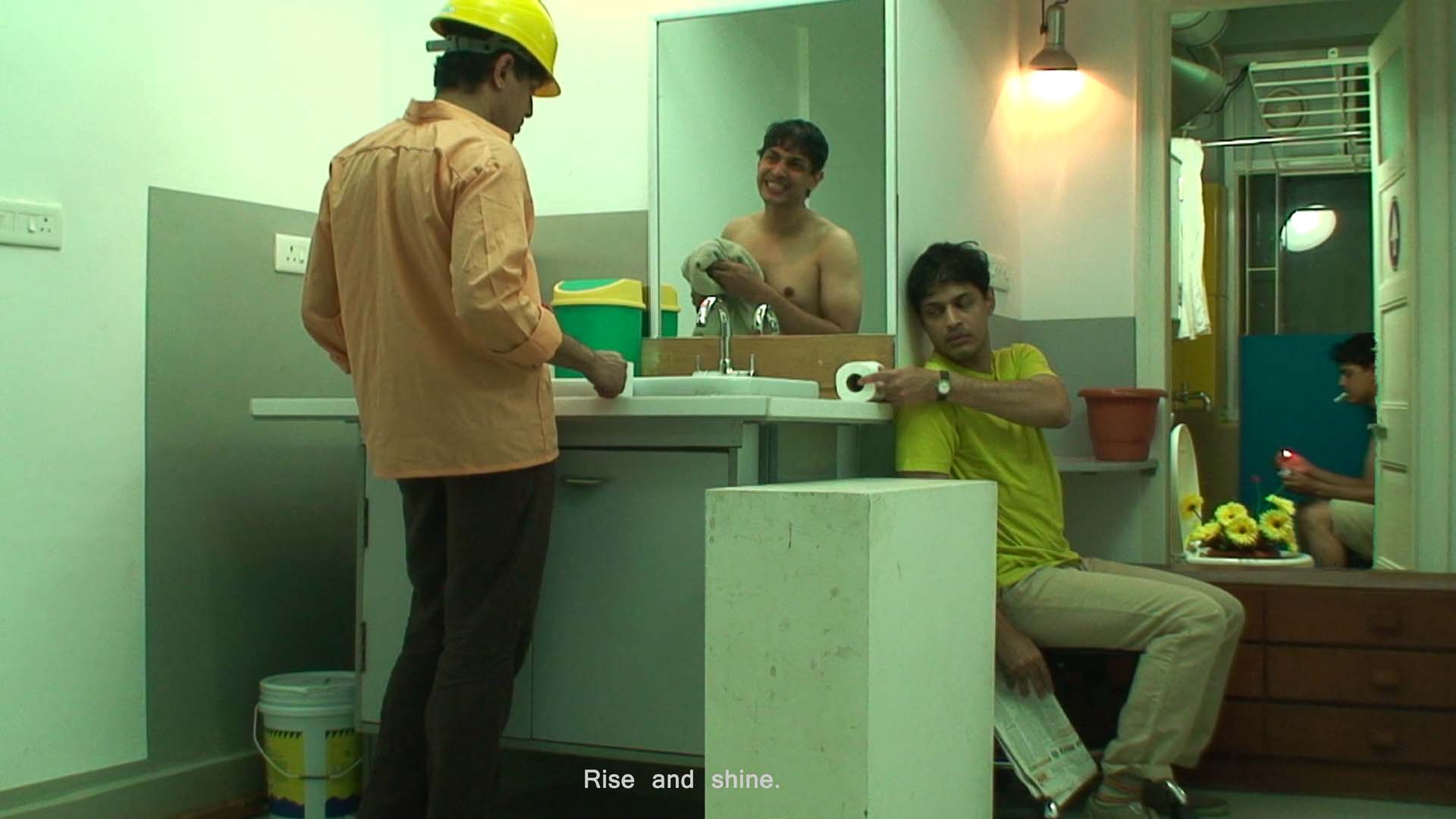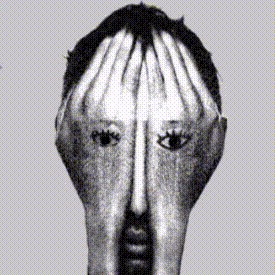|

Video Still from
Narcissicon 2012
Single-Channel Video, 43m:00s
In her 1976 essay "Video: The Aesthetics of Narcissism", which looks at early works by Vito Acconci, Richard Serra, Peter Campus and others who dealt with the destabilizing effects of "the self split and doubled," Rosalind Krauss concluded that "the medium of video is narcissism." But how about today, an age of social networking and avatars in which multiple selves are no longer a threat but a joy and comfort? What might narcissism in video art look like now?
Bangalore-based Kiran Subbaiah has been exploring the relationship between human subjects and their doubles in photography and video for the past decade. He is known for complex works, but none of the earlier pieces compare to Narcissicon, his new 43-minute video (the product of five years' intermittent labor) that recently debuted at Chatterjee & Lal.
Although shown as a loop, Narcissicon has a clear starting point: the beginning of the artist's day. He stands in front of the mirror scratching his rumpled head. His reflection, dressed differently and acting independently, advises the first Subbaiah on how to clear his drowsiness. A third Subbaiah rolls in on a chair reading the newspaper, wishing the first a friendly good morning. A fourth emerges shirtless in the doorway behind, gesturing to the third to hand him a roll of toilet paper. A fifth steps out of the shower and closes the bathroom door for privacy.
There are about a half-dozen vignettes of this sort in Narcissicon, all of which take place inside the artist's sparsely furnished, white-box studio/apartment. Camera work is largely limited to a leftward pan that moves the narrative from one episode to the next and an occasional zoom into monitors and windows, from one plane of representation to another. The many doorways and windows through which the characters pass have the Las Meninas-like effect of strongly asserting the frame of representation, strictly enclosing the work's figures and relationships. Unlike the live feedback loops of early video art by Vito Acconci and others, Narcissicon situates all iterations of the artist's self inside the video "mirror" from the beginning.
The various Subbaiahs do not always get along. They bicker over how to edit the video. One coldly ignores another's invitation to play catch. One disarms another dressed like a hood. One is accidentally killed by another’s tossed kitchen knife. But the violence feels like nothing graver than horseplay between brothers. In fact, what Subbaiah actually seems to be exploring is not narcissism, which is premised on a subject enthralled with his or her own representation, but rather something like the comic relations between identical others.
Free from the notion of original and copy, Subbaiah's clones exist without the anxieties that religion, psychoanalytic theory and science fiction have created around the issue of identity and reproduction. Subbaiah's thematic peers are Tomoko Sawada, Miao Xiaochun and Chi Peng, artists for whom the replication of the self through digital imaging is haunted by no specter of the "uncanny" double, being instead a tool for exploiting the humor inherent in look-alikes, and for poking fun at those who make too much of their own individuality.
Ryan Holmberg
Art News 2013
|

